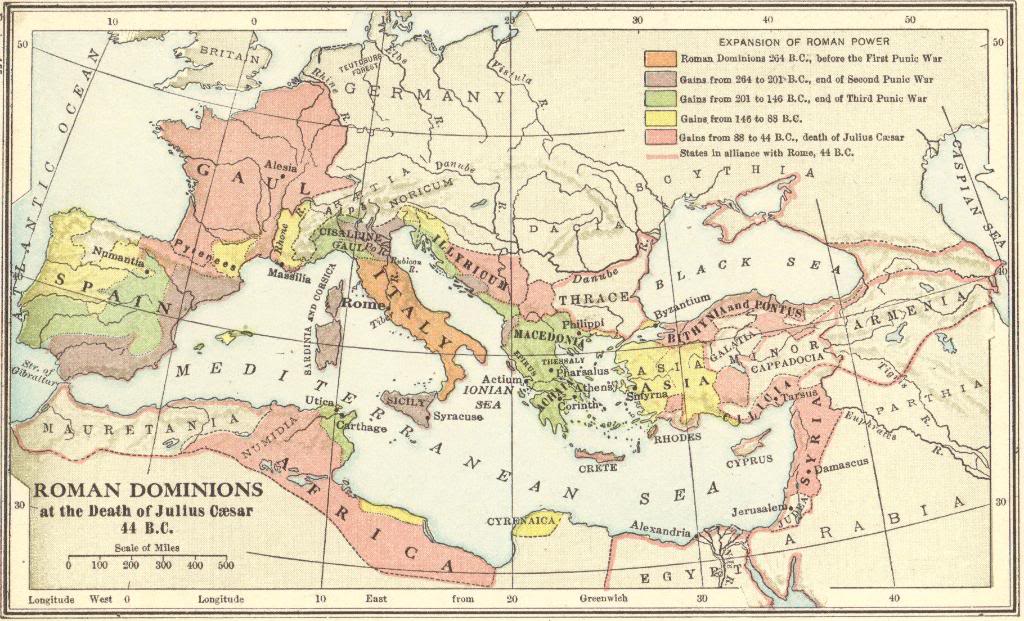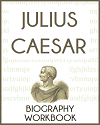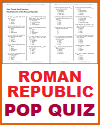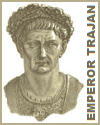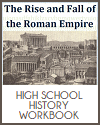Map of Roman dominions at the death of Julius Caesar in 44 B.C.E. Map marks the time period(s) for all major acquisitions of the Roman Republic. Click here to enlarge.
At the time of Julius Caesar's death in 44 BCE, the Roman Republic had expanded its dominions significantly, and the territories under Roman control extended across several regions. Julius Caesar had played a crucial role in these conquests, which contributed to the complexities of the late Roman Republic.
The Roman Republic: Rome controlled the Italian Peninsula, which was the core of the Roman Republic. This included the city of Rome itself and the surrounding region of Latium.
Roman Provinces in the Western Mediterranean:
- Gaul: Julius Caesar's campaigns in Gaul (modern-day France) greatly expanded Roman control in Western Europe. The conquest of Gaul was one of Caesar's most significant achievements.
- Iberia: Parts of the Iberian Peninsula (modern-day Spain and Portugal) were under Roman control, primarily along the eastern coast.
- Corsica and Sardinia: These islands in the western Mediterranean were Roman provinces.
North Africa:
- Egypt: Egypt was under Roman influence, as it was ruled by Cleopatra and was a key ally of Julius Caesar. Following Caesar's assassination, Egypt was annexed as a Roman province.
- Cyrenaica: This region in modern Libya was also a Roman province.
Asia Minor (Anatolia): Rome had established control over parts of Asia Minor, primarily along the western coast. Key cities like Ephesus and Pergamum were part of these Roman provinces.
The Eastern Mediterranean:
- Macedonia and Greece: These regions in the eastern Mediterranean were Roman provinces.
- Asia (the Roman Province of Asia): This region, encompassing parts of modern Turkey, was a Roman province.
- Bithynia and Pontus: Areas in northern Asia Minor were also under Roman control.
- Syria: The Roman Republic had influence in the eastern Mediterranean, and parts of Syria were under Roman administration.
Conquered Territories in the East: The Roman Republic had extended its dominions into regions such as Judea and parts of Armenia. These territories were often client kingdoms or under indirect Roman control.
Client States and Allies: In addition to direct provinces, Rome had established alliances and client states in various regions, giving them varying degrees of autonomy but ensuring their loyalty to Rome.
It is important to bear in mind that Julius Caesar's death marked a significant turning point in Roman history. The power struggles that ensued in the wake of his assassination eventually led to the end of the Roman Republic and the emergence of the Roman Empire, with Caesar's grandnephew and adopted son, Octavian (later known as Augustus), becoming the first Roman Emperor. The subsequent period, known as the Pax Romana, witnessed further expansion and consolidation of Roman territories under the emperors.
|
